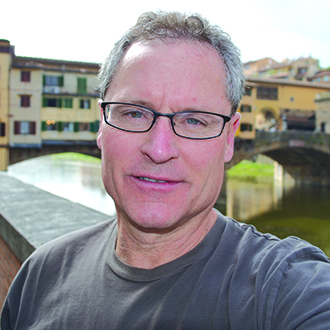I just returned from the island of Madeira — due west of Casablanca, Morocco, in the Atlantic but claimed by Portugal in 1420 when it was a naval power.
It is a place like no other I have seen. Madeira pulsed out of the ocean during dramatic volcanic activity. The terrain is steep and craggy, with scores of recently built tunnels connecting each side of a sharp, mountainous shoulder of black basalt. And there is little shellfish locally due to lack of a shallow continental shelf.
Shipping wines by sailing vessel back in the day hurt the wines, as cargo areas were below deck and could reach very unpleasant temperatures. But when one cask of Madeira wine was returned unsold to the island after several crossings of the equator, the winemaker realized the wine had improved significantly. Winemakers began to ship wines just to improve them, but that got expensive and logistically difficult. One producer developed the Canteiro method, in which wine-filled casks were kept in attics, where some of the cask evaporates, concentrating the remainder of the cask. The other method, Estufagem, heats vats to accomplish a similar accelerated aging process.
These wines will slowly morph while in the barrel but once bottled they remain stable and unchanging for decades or longer. Blake Murdock of The Rare Wine Co., an important Madeira importing company in the U.S., told me, “Everything bad that can be done to the wine already has been done. These wines will last for a long time unopened. Even opened, they can last for a couple of years.” This is a perfect wine for restaurant sales or for the home taster who wants to have a glass of wine and recap it for future use. The winemaker of Justino’s Madeira, Dina Luis, led us through a tasting, which included vintage Madeira wines from 1978, ’64, ‘54, ’40 and ’34. She told me, “I once forgot and left a bottle of Justino’s Madeira in the trunk of my car for over a month. The daytime temperatures were north of 90 degrees. Who knows what it was in my trunk. When I discovered it, I opened it with a friend and it was fine.”
Essentially, Madeira has five white grapes and one red one. And there are four main styles of flavor, mostly determined by the grape. Sercial makes for a dry fortified wine. Terrantez makes for an off-dry style. Verdelho makes for medium-dry; Boal, medium-rich, leaning toward sweeter; and Malvasia or Malmsey, a rich or sweeter style still. The red grape, Tinta Negra, makes wine all over the dry/sweetness spectrum. The high acidity level of all these wines can easily support all degrees of sweetness. Humberto Jardim of Henriques & Henriques winery told me, “Madeira has a higher acidity than any of the other fortified wines.” Their Henriques & Henriques 50-year-old Madeira prevailed in a blind-tasting of Portuguese-fortified wine.
Super highlights of our tasting with Jardim included an H&H 1898 and an 1894 wine. There wasn’t even a distant hint of tiredness in this wine, produced before my grandfather was born. Madeira also makes some unfortified still wines in white and red that will balance out any dinner party. Ivo Couto, winemaker for H.M. Borges, said, “The quality of grape and wine production were vastly improved 25 years ago on our island. We are just starting to harvest the wines from grapes grown then. Going forward all of Madeira wines will be better.”
There are essentially seven producers on the island that have survived the centuries and consolidated power and winery holdings. In the early 1700s two-thirds of all the wine that came to America was from Madeira. All of our Founding Fathers knew, owned and enjoyed these wines. In 1776, the signing of the Declaration of Independence was toasted by the signers with Madeira wine.
So that’s it. All you need to know is here. But now you must immerse yourself in flavor. Find an impressive store with a good selection. The price-to-value experience will impress you. Pick up a few styles and brands of Madeira and enjoy them. Have them all opened at once so you can compare tastes. These wines will last well longer than they’re likely to remain in the bottle. Sip and enjoy.
Write me at doug@dougpaulding.com.


